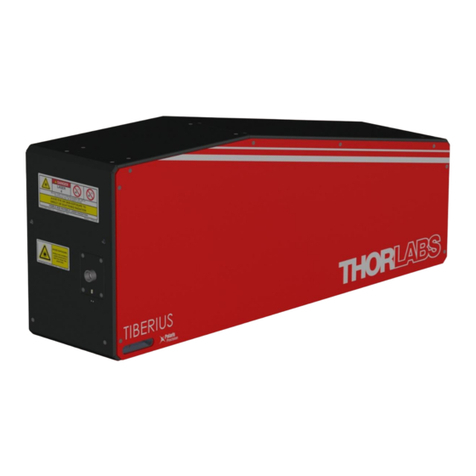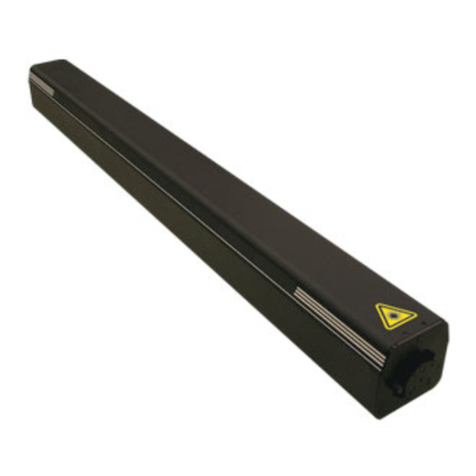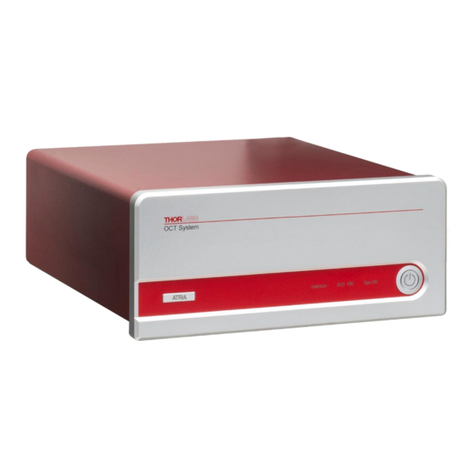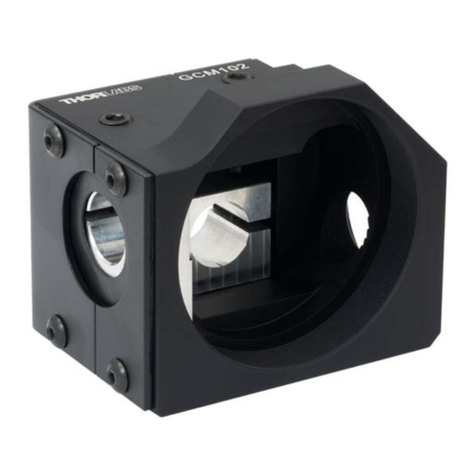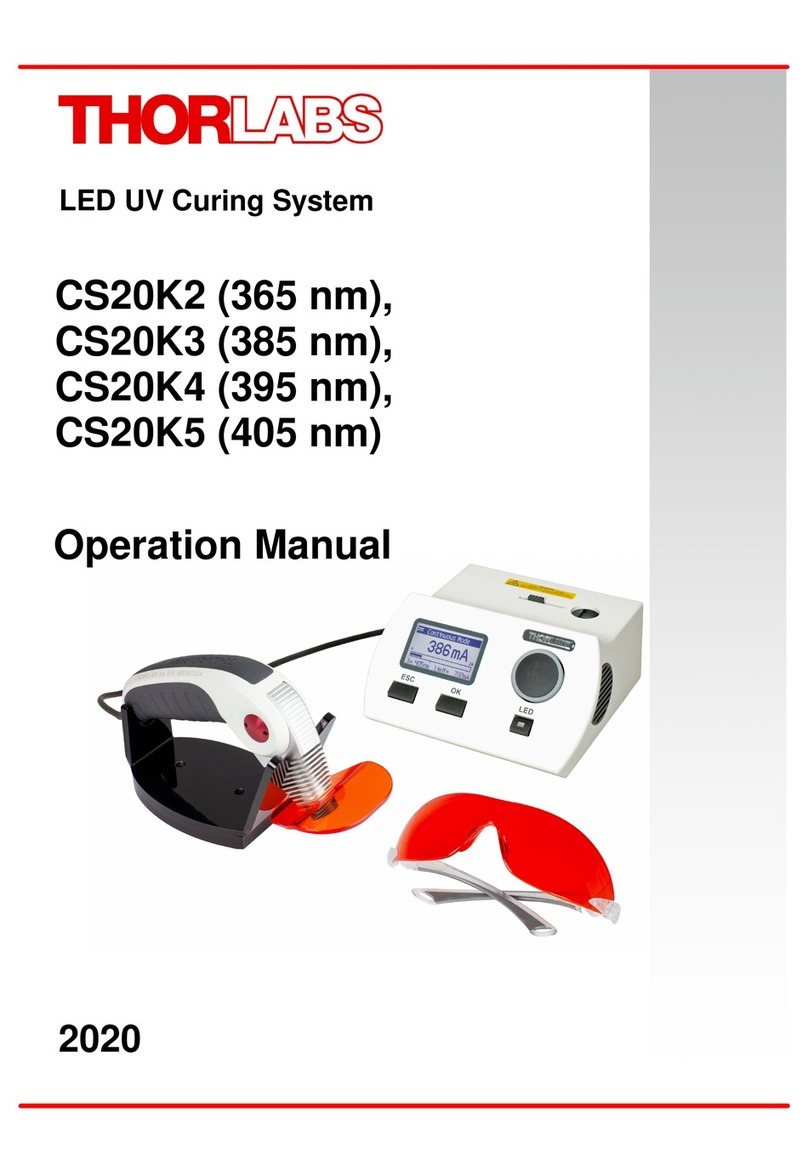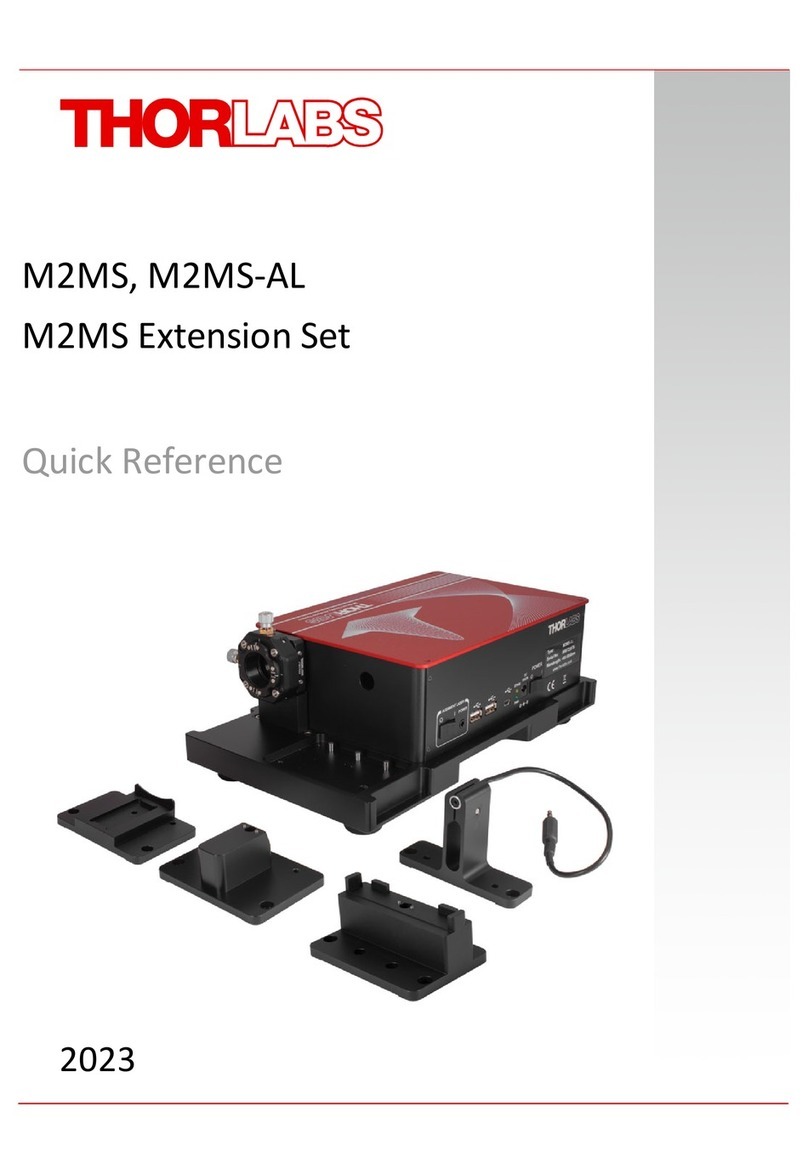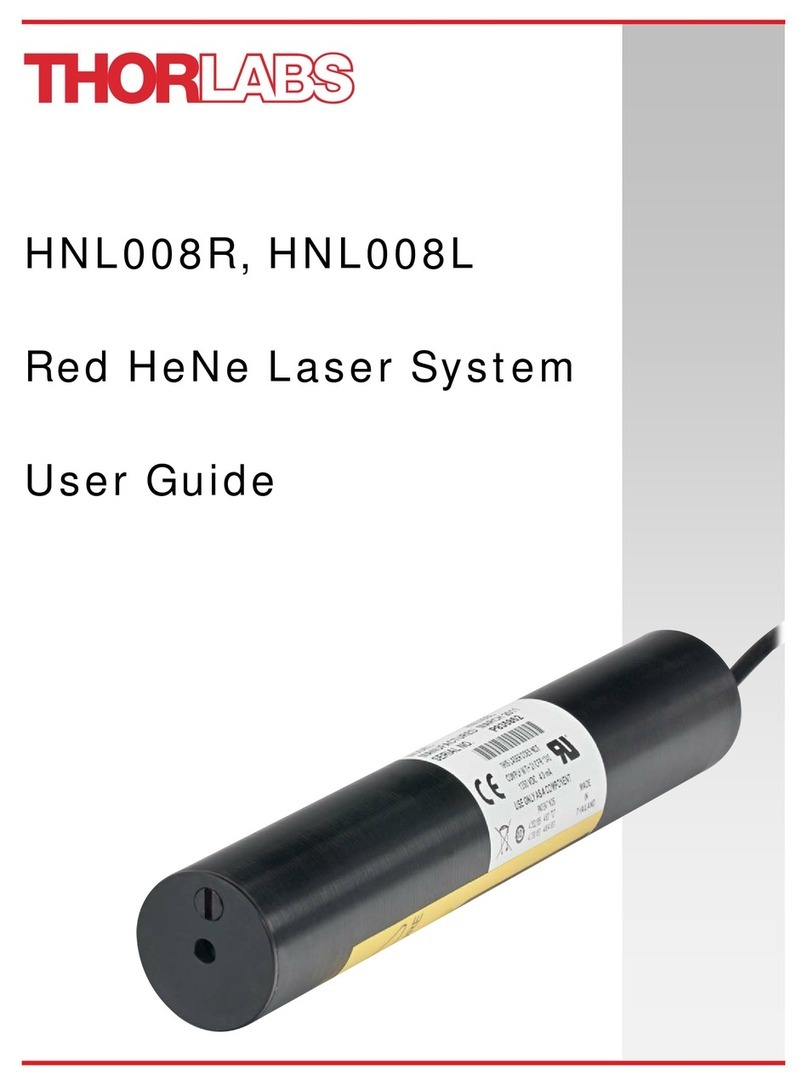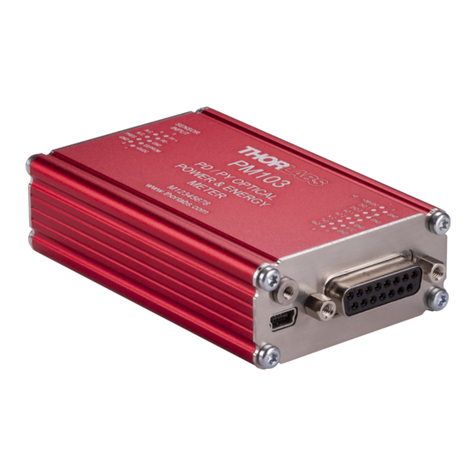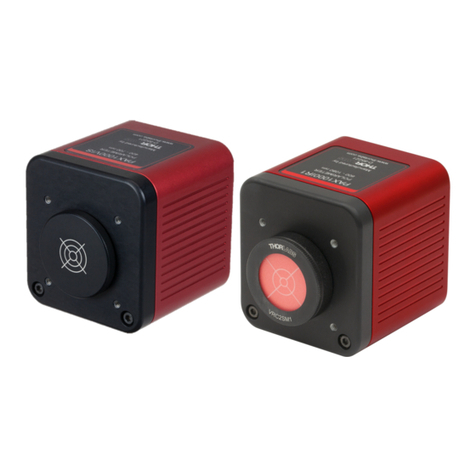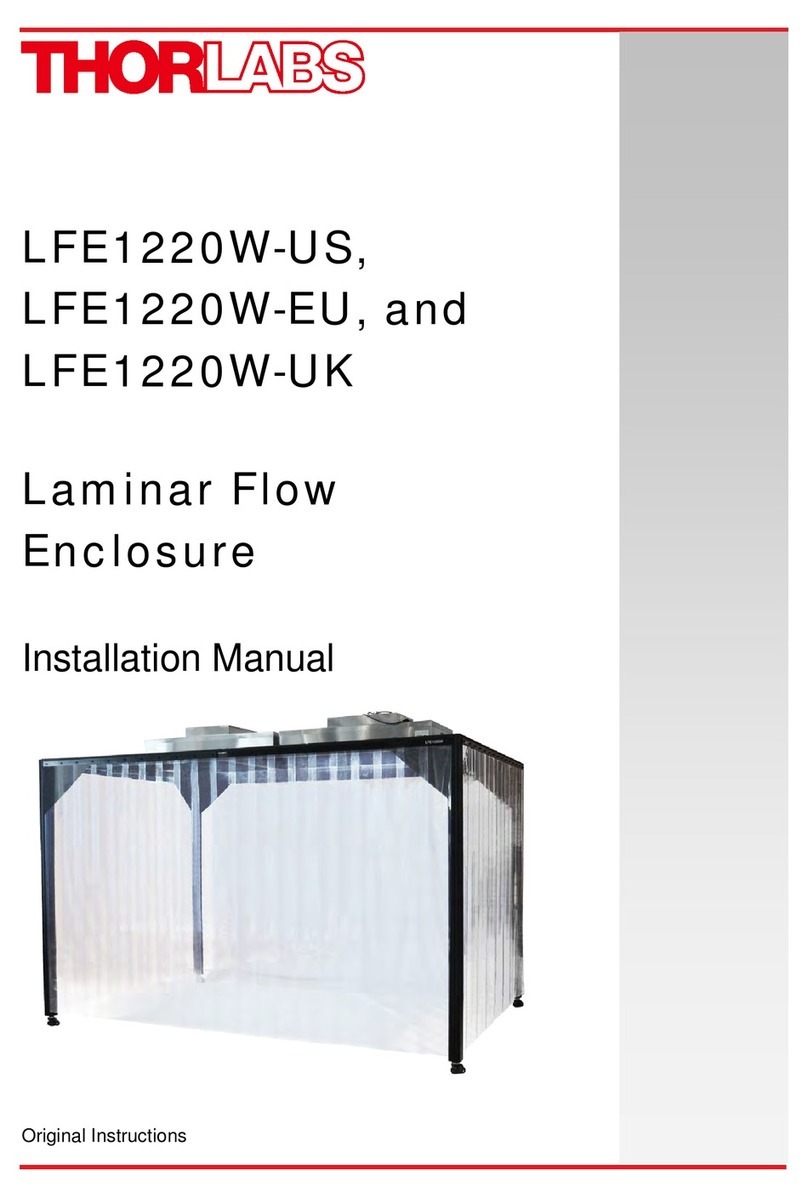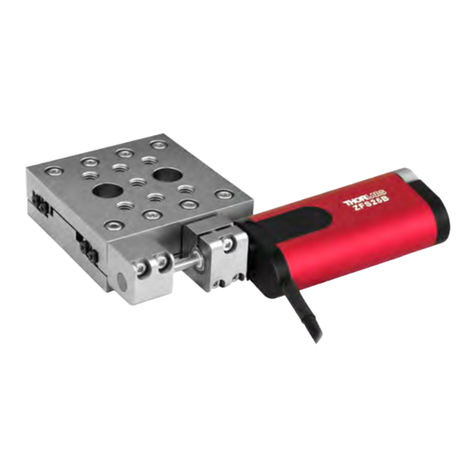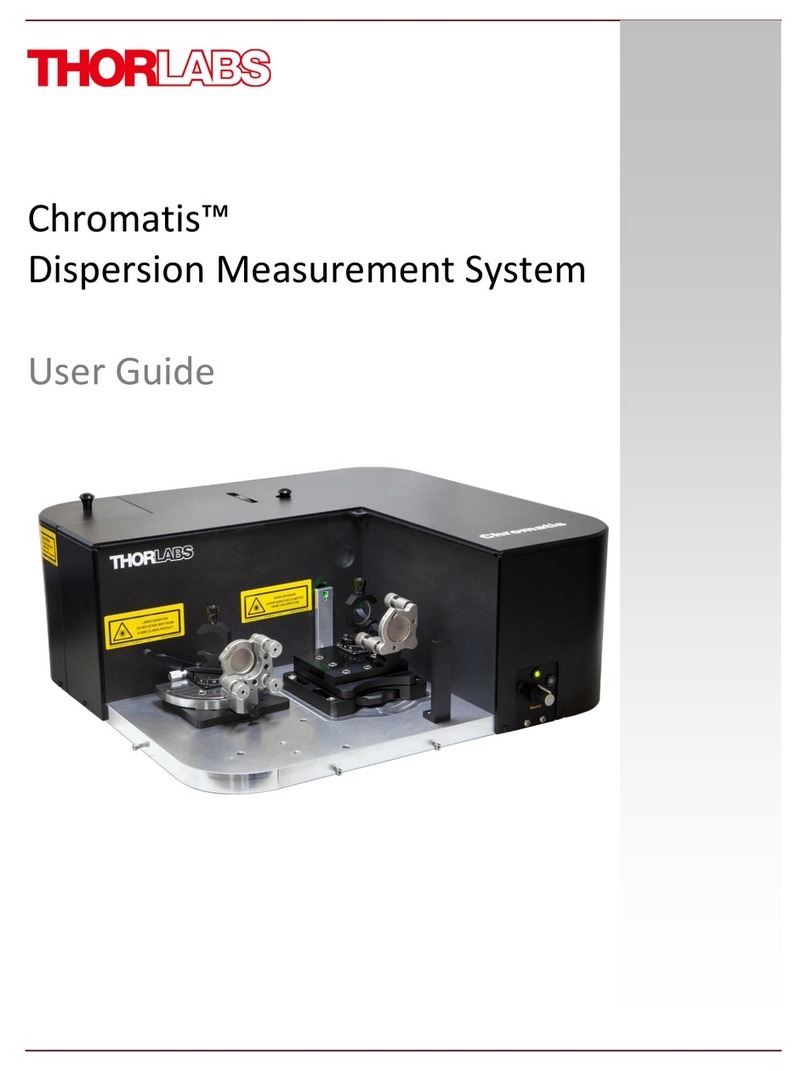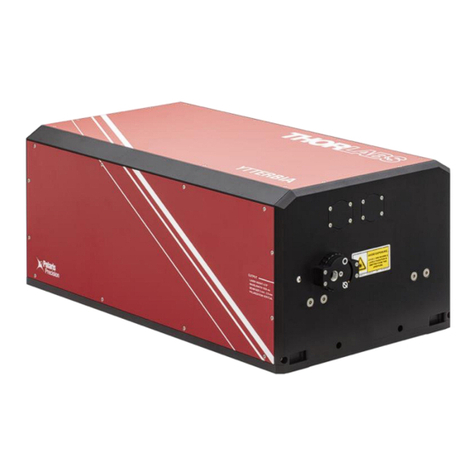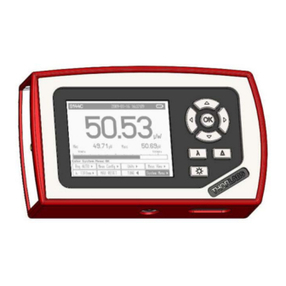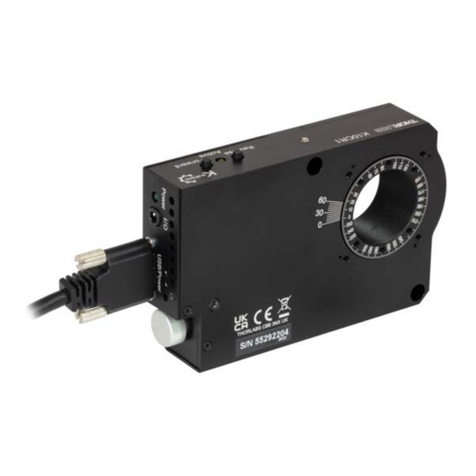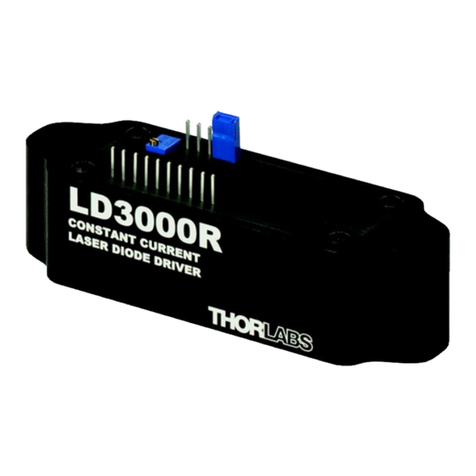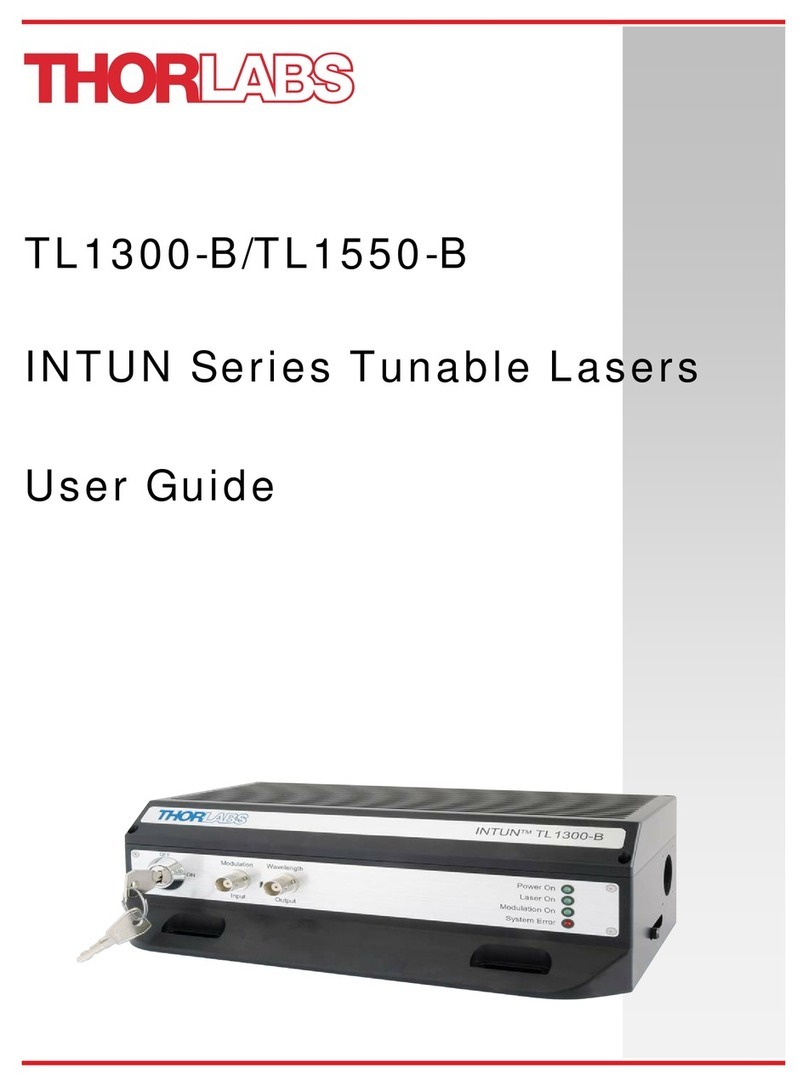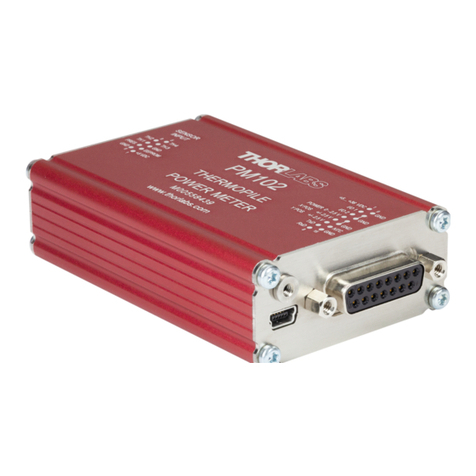
Hide The Elliptec™ Motor
Operation of the Motors
The motion of the ELL10 stage is controlled by forcing the piezoelectric elements to vibrate at specific ultrasonic frequencies. For each motor, there is an
ultrasonic resonant frequency that will push the stage forward, and another that will pull the stage backward. Operating a motor at one of its resonance
frequencies causes the tip of the motor to continuously cycle in a tight clockwise elliptical path. When the motor is driven at its other resonant frequency, the
tip of the motor cycles through that same path in a counterclockwise direction. Both resonant frequencies are around 100 kHz. The total displacement at the tip
of motor is a function of the mechanical load it is driving and the voltage supplied to the piezo element. In the case of no loading and a 5 V maximum driving
voltage at a resonant frequency, the tip of the motor expands and contracts by no more than a few microns while tracing the elliptical path. Please see The
Elliptec™ Motor tab for more informationand an animation illustrating the operational principle of the motors.
Homing the Linear Stage
To Home the stage, press the BW button on the interface board, click the Home button in the Elliptec™ software's graphical user interface (GUI), or send the
appropriate ASCII message as is specified in the communications protocol manual. The stage uses a relative (incremental) magnetic sensor with an encoder
resolution of 0.5 µm to home and position the stage. During the procedure to define the default Home position, the stage is translated forward and backward to
index the limits of travel. The default Home position is located at one normal limit (the backward position) of the stage's range of motion. If desired, the user
may redefine the position of Home to be offset from the default position. Being able to customize the Home position can be useful when synchronizing the
orientations of two or more stages.
Positioning the Linear Stage
Note that the linear stage is not intended for continuous operation. We recommend operation with duty cycles of less than 40% during general use, while
operation with duty cycles greater than 60% should be limited to a few seconds.
Before the stage may be positioned, the Home position of the stage must be found. Please see the previous section for details. The movement of the
stage may be controlled by pressing buttons on the interface board, through computer control via the Elliptec software package that may be downloaded, or by
sending simple signals to digital lines on the stage's board. The buttons on the interface board can be seen in the image of the interface board above. A link
to download the software and accompanying documentation can be found in the Software tab. The interface board may be used as an accessory while
interfacing with the stage through the Elliptec software; all changes in the position of the linear stage that occur as a result of pressing buttons on the interface
board are registered by the software, and the software may independently control the linear stage while the interface board is connected. It is also possible to
effect the simultaneous movement of a mixed network of up to 16 Elliptec piezoelectric resonant motor products by connecting all to the communications bus.
When this is done, the software can send separate commands to each, while commands originating from buttons pressed on the handset will be sent to all
connected devices. The communications protocol manual describes how to use the software to individually address each connected device.
The interface board can be used to move the stage forward and backward in increments by pressing and holding the JOG button while pressing and releasing
the FW or BW button, respectively. The default increment is 2 mm, and a custom step size can be set using the Elliptec software or by sending the appropriate
ASCII message(s) as specified in the communications protocol manual. The stage obtains its best repeatability and linear performance when incremental
movement is ≤ 4 mm, as the pitch of the relative magnetic encoder is 4 mm. The Elliptec software can be used to move the stage to absolute and relative
positions, in addition to jogging the stage forward or backward. The software is also used to set the jog step size, read the position of the stage, and adjust the
position of Home, as is described in the previous section. The velocity of the stage can be adjusted to a value equal to or greater than 60% of the maximum
velocity through use of the ASCII message calls described in the communications protocol manual.
The stage learns to efficiently position itself precisely using a position error compensation algorithm. After the stage moves into a new position, it detects the
error between the requested and actual positions. The position of the stage is then corrected, and an error compensation value is calculated. The algorithm is
then updated with the error compensation value, so that it is applied when the stage is move to its next position. Typically, an optimum error compensation
value is found after between two and six movements.
Resonant Frequencies
On power-up, the factory default setting instructs each motor driving the ELL10 linear stage to search for the resonant frequencies that will deliver the best
performance. During this process, the linear stage will translate a forward and backward. If movement on start-up is undesirable, it is possible to disable
this calibration procedure by using the serial port to initialize the frequencies on power-up. A new search for optimal resonant frequencies may be
performed at any time; to maintain optimal performance, it is recommended that new searches be performed after changes in loading and/or ambient
temperature. Please see Section 3.3 of the manual for details.
The Elliptec™ Piezoelectric Resonant Motor
THE ELLIPTEC™ MOTOR
